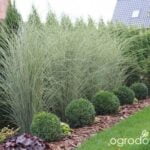Are you looking to update your outdoor space with a low-maintenance and visually appealing design? Look no further than gravel landscaping ideas. Gravel is a versatile and cost-effective material that can add texture, color, and functionality to any landscape. From driveways to garden paths, gravel can be used in a variety of ways to enhance your outdoor space.
Using gravel in landscaping has become increasingly popular due to its numerous benefits. Not only does it provide excellent drainage and erosion control, but it also requires minimal upkeep compared to traditional lawns or gardens. In this article, we will explore the different types of gravel available for landscaping, design and planning tips, as well as creative ideas for both front yards and backyards.
When it comes to choosing the right type of gravel for your landscaping project, there are various options to consider based on color, size, and texture. Additionally, incorporating gravel into your landscape design requires thoughtful planning and creativity.
Whether you’re looking to create a modern or rustic look, there are endless possibilities when it comes to using gravel in your outdoor space. So let’s dive into the world of gravel landscaping and discover how this material can transform your home’s exterior.
Benefits of Using Gravel in Landscaping
Using gravel in landscaping offers a range of benefits, making it an attractive option for many homeowners. One of the primary advantages is its low maintenance nature. Unlike grass, gravel doesn’t require mowing or watering, making it an eco-friendly and cost-effective choice. Additionally, gravel is durable and can withstand heavy foot traffic, making it ideal for high-traffic areas in your yard.
Another benefit of using gravel in landscaping is its versatility. Gravel comes in various colors, sizes, and textures, allowing you to create unique and visually appealing designs for your outdoor space. Whether you’re aiming for a modern, minimalist look or a more natural and rustic feel, there’s a type of gravel that will suit your desired aesthetic. Moreover, gravel can be used as a weed barrier when properly installed, reducing the need for harmful chemicals or constant weeding.
In terms of drainage, gravel is an excellent option for ensuring proper water runoff. When incorporated into landscaping designs, gravel helps prevent erosion and flooding by allowing water to permeate through the soil at a steady pace.
This can be particularly beneficial in areas prone to heavy rainfall or where drainage is a concern. With these benefits in mind, integrating gravel into your landscaping design can contribute to not only the visual appeal of your outdoor space but also its overall functionality.
| Benefits | Details |
|---|---|
| Low Maintenance | No mowing or watering required |
| Versatility | Comes in various colors, sizes, and textures |
| Drainage | Assists with preventing erosion and flooding |
Types of Gravel for Landscaping
When it comes to gravel landscaping ideas, the type of gravel you choose is crucial to achieving the aesthetic and functionality you desire. There are various types of gravel to choose from, each with its own unique characteristics and uses in landscaping.
Pea Gravel
Pea gravel is a popular choice for landscaping due to its smooth, rounded texture and variety of natural colors. This type of gravel is perfect for pathways, patios, and decorative features in your garden. It also provides good drainage and helps to prevent erosion.
River Rock
River rock is a larger gravel option that can add a sense of natural beauty to your landscaping design. With its smooth, polished surface and assortment of sizes and colors, river rock is ideal for creating dry creek beds or as a decorative element around plants.
Decomposed Granite
For a more natural and rustic look, decomposed granite is an excellent choice. This fine gravel compacts well and is often used for creating stable, firm surfaces for walkways and driveways. It also works well in xeriscape gardens due to its ability to retain moisture.
By understanding the different types of gravel available for landscaping, you can make informed decisions that will enhance the overall look and functionality of your outdoor space. Whether you opt for pea gravel, river rock, or decomposed granite, the right choice of gravel will bring your landscaping ideas to life while adding visual appeal and practical benefits.
Design and Planning Tips for Gravel Landscaping
When considering gravel landscaping ideas, it’s important to start with a well-thought-out design and plan. Here are some tips to help you create a beautiful and functional gravel landscape:
1. Determine the Purpose: Before starting your gravel landscaping project, consider how you want to use the space. Are you creating a pathway, patio, or simply adding visual interest to your yard? Understanding the purpose of the gravel area will help you determine the best type of gravel to use as well as its layout and design.
2. Choose the Right Gravel: There are various types of gravel available for landscaping, including pea gravel, crushed stone, river rock, and decomposed granite. Each type offers different textures and colors that can impact the overall look of your landscape. Consider the style and aesthetic you want to achieve when selecting the right gravel for your project.
3. Plan for Drainage: Proper drainage is essential when using gravel in landscaping. Without adequate drainage, water can accumulate and cause issues such as erosion or standing water. Consider incorporating a layer of permeable landscape fabric beneath the gravel to prevent weed growth while still allowing water to drain through.
4. Create Defined Edges: To give your gravel landscaping a polished and tidy appearance, consider creating defined edges around your designated areas. This can be achieved using materials such as pavers, bricks, or metal landscape edging. Defined edges not only enhance the aesthetics but also help contain the gravel within its intended space.
By taking these design and planning tips into consideration, you can create a stunning and functional gravel landscape that enhances your outdoor space while minimizing maintenance requirements.
Creative Gravel Landscaping Ideas for Front Yards
When it comes to landscaping, the front yard is often the first thing that visitors and passersby see. This makes it important to create an inviting and visually appealing front yard using gravel landscaping ideas. Gravel can be a versatile and low-maintenance option for front yards, offering a unique and modern aesthetic to your home’s exterior.
Pathways and Walkways
One creative way to incorporate gravel into your front yard landscaping is by creating pathways and walkways. Using different colors and sizes of gravel can add visual interest to these areas, guiding visitors to your front door or other key focal points in the yard. You can also use edging materials such as bricks or pavers to define the boundaries of the pathways, adding a polished look to the overall design.
Rock Gardens
Another innovative gravel landscaping idea for front yards is the creation of rock gardens. By combining gravel with strategically placed rocks, succulents, and drought-tolerant plants, you can create a visually striking focal point in your front yard. The texture and color variations in the gravel can add depth and dimension to these rock gardens, making them an eye-catching feature for visitors.
Driveway Accents
Incorporating gravel into your driveway design can also be a creative way to enhance your front yard’s aesthetics. By using gravel as accents or borders for the driveway, you can break up large expanses of pavement and soften the overall look of your home’s exterior. Additionally, using contrasting colors of gravel against the driveway surface can add visual interest and curb appeal to your property.
Implementing these creative gravel landscaping ideas in your front yard can transform it into a welcoming and attractive space that complements your home’s exterior architecture. Whether you choose to create pathways, rock gardens, or driveway accents, incorporating gravel into your landscaping design offers endless possibilities for customization and personalization.
Innovative Gravel Landscaping Ideas for Backyards
One great way to incorporate gravel into your backyard landscaping is by creating a pathway. Using different types of gravel and arranging them in a pattern can give your backyard a unique and charming look. You can also add stepping stones or pavers within the gravel pathway to create visual interest and functionality.
Another creative gravel landscaping idea for backyards is to use it as a base for outdoor seating areas or fire pits. By outlining the seating area with large rocks or bricks, you can define the space and prevent the gravel from getting scattered around. Adding comfortable outdoor furniture and lighting will transform your backyard into an inviting and cozy retreat.
For a more modern and low-maintenance backyard design, consider using gravel as a ground cover instead of traditional grass or mulch. This can help conserve water, reduce weed growth, and minimize the need for mowing. You can create different areas within your backyard using gravel, such as a meditation corner, a play area for kids, or a space for container gardening.
| Gravel Landscaping Ideas | Description |
|---|---|
| Gravel Pathway | Create a unique pathway using different types of gravel and adding stepping stones or pavers for visual interest. |
| Oudoor Seating Areas | Use gravel as a base for seating areas or fire pits, with defined spaces outlined with rocks or bricks. |
| Modern Ground Cover | Replace grass or mulch with gravel to create various functional spaces within your backyard with minimal maintenance required. |
Maintenance and Upkeep of Gravel Landscaping
Gravel landscaping may seem low-maintenance, but it still requires some care to keep it looking its best. Here are some tips for the maintenance and upkeep of gravel landscaping:
1. Weed Control: One of the key maintenance tasks for gravel landscaping is controlling weeds. Use a pre-emergent herbicide to prevent weed seeds from germinating, and manually remove any weeds that do sprout up. This will help keep your gravel area looking clean and well-maintained.
2. Raking: Over time, gravel can become uneven due to foot traffic, weather, or other factors. Regularly rake your gravel to ensure an even distribution and level surface. Consider using a landscape rake or a stiff garden rake for this task.
3. Adding New Gravel: Depending on foot traffic and weather conditions, you may need to add new gravel to your landscaping over time. Keep an eye on the depth of your gravel layer, and add more as needed to maintain the desired look and function of the space.
4. Boundary Maintenance: Check the edges of your gravel landscaping regularly to ensure that the boundaries remain well-defined. You may need to edge the area with metal or plastic edging as needed to prevent migration of the gravel into adjacent areas.
By following these maintenance tips, you can ensure that your gravel landscaping continues to enhance the beauty and functionality of your outdoor spaces for years to come.
Final Thoughts and Conclusion on the Versatility of Gravel Landscaping Ideas
In conclusion, gravel landscaping offers a wide range of benefits and creative possibilities for both front and backyards. The use of gravel in landscaping provides an affordable, low-maintenance, and visually appealing option for enhancing outdoor spaces. Whether it’s creating a rustic, natural look or a modern and minimalist design, the versatility of gravel allows for endless possibilities.
When considering gravel landscaping ideas, it’s important to choose the right type of gravel based on the specific needs of the project. From pea gravel to crushed stone, there are various options to consider, each offering unique characteristics that can complement different styles and themes. Additionally, proper planning and design are key to achieving successful gravel landscaping that not only looks great but also functions well in its intended space.
Furthermore, the maintenance and upkeep of gravel landscaping are relatively straightforward compared to traditional grass or plant-based designs. By implementing some basic maintenance practices such as regular raking and replenishing loose gravel, homeowners can enjoy their gravel landscapes for years to come. Ultimately, the versatility and practicality of gravel landscaping ideas make it a popular choice for homeowners looking to transform their outdoor spaces with style and functionality.
Frequently Asked Questions
What Is the Best Gravel to Use for Landscaping?
The best gravel to use for landscaping often depends on the specific project and the desired aesthetic. Generally, a popular choice is pea gravel, as its smooth, round shape makes it easy to walk on and visually appealing. Another option is crushed stone or river rock, which can provide a more natural look to outdoor spaces.
What Can I Do With Gravel in My Yard?
Gravel can be used in a variety of ways in your yard to enhance its appearance and function. It can be used for pathways, creating a stable and attractive surface for walking or driving.
Additionally, gravel can be used as mulch around plants and trees, allowing for better drainage and weed control. In some cases, it can also be used to create decorative features such as dry river beds or rock gardens.
Can I Lay Gravel on Top of Soil?
Yes, you can lay gravel on top of soil if done properly. It’s important to first prepare the area by removing any vegetation and ensuring the soil is level.
Then, a layer of landscaping fabric should be laid down to prevent weeds from growing through the gravel. Finally, the desired amount of gravel can be spread evenly over the area for an attractive and functional surface.

Welcome to my gardening blog! I am passionate about plants and enjoy sharing my knowledge and experiences with others. In this blog, I will write about everything related to gardening, from tips on how to get started to updates on my own garden projects.





